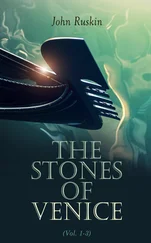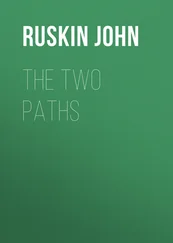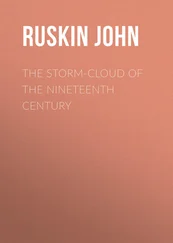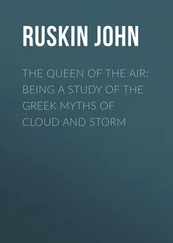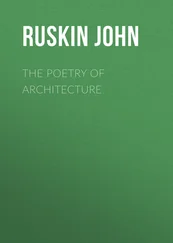John Ruskin - On the Old Road Vol. 1 (of 2)
Здесь есть возможность читать онлайн «John Ruskin - On the Old Road Vol. 1 (of 2)» — ознакомительный отрывок электронной книги совершенно бесплатно, а после прочтения отрывка купить полную версию. В некоторых случаях можно слушать аудио, скачать через торрент в формате fb2 и присутствует краткое содержание. Жанр: foreign_antique, foreign_home, literature_19, visual_arts, на английском языке. Описание произведения, (предисловие) а так же отзывы посетителей доступны на портале библиотеки ЛибКат.
- Название:On the Old Road Vol. 1 (of 2)
- Автор:
- Жанр:
- Год:неизвестен
- ISBN:нет данных
- Рейтинг книги:3 / 5. Голосов: 1
-
Избранное:Добавить в избранное
- Отзывы:
-
Ваша оценка:
- 60
- 1
- 2
- 3
- 4
- 5
On the Old Road Vol. 1 (of 2): краткое содержание, описание и аннотация
Предлагаем к чтению аннотацию, описание, краткое содержание или предисловие (зависит от того, что написал сам автор книги «On the Old Road Vol. 1 (of 2)»). Если вы не нашли необходимую информацию о книге — напишите в комментариях, мы постараемся отыскать её.
On the Old Road Vol. 1 (of 2) — читать онлайн ознакомительный отрывок
Ниже представлен текст книги, разбитый по страницам. Система сохранения места последней прочитанной страницы, позволяет с удобством читать онлайн бесплатно книгу «On the Old Road Vol. 1 (of 2)», без необходимости каждый раз заново искать на чём Вы остановились. Поставьте закладку, и сможете в любой момент перейти на страницу, на которой закончили чтение.
Интервал:
Закладка:
35. We have by-and-bye an equally comprehensive sketch of the essential characters of the Gothic cathedral; but this we need not quote, as it probably contains little that would be new to the reader. It is succeeded by the following interpretation of the spirit of the two styles:—
"Comparing, apart from enthusiasm, the two styles of Lombard and Pointed Architecture, they will strike you, I think, as the expression, respectively, of that alternate repose and activity which characterize the Christian life, exhibited in perfect harmony in Christ alone, who, on earth, spent His night in prayer to God, His day in doing good to man—in heaven, as we know by His own testimony, 'worketh hitherto,' conjointly with the Father—forever, at the same time, reposing on the infinity of His wisdom and of His power. Each, then, of these styles has its peculiar significance, each is perfect in its way. The Lombard Architecture, with its horizontal lines, its circular arches and expanding cupola, soothes and calms one; the Gothic, with its pointed arches, aspiring vaults and intricate tracery, rouses and excites—and why? Because the one symbolizes an infinity of Rest, the other of Action, in the adoration and service of God. And this consideration will enable us to advance a step farther:—The aim of the one style is definite, of the other indefinite; we look up to the dome of heaven and calmly acquiesce in the abstract idea of infinity; but we only realize the impossibility of conceiving it by the flight of imagination from star to star, from firmament to firmament. Even so Lombard Architecture attained perfection, expressed its idea, accomplished its purpose—but Gothic never; the Ideal is unapproachable."—Vol. ii., p. 23.
36. This idea occurs not only in this passage:—it is carried out through the following chapters;—at page 38, the pointed arch associated with the cupola is spoken of as a "fop interrupting the meditations of a philosopher"; at page 65, the "earlier contemplative style of the Lombards" is spoken of; at page 114, Giottesque art is "the expression of that Activity of the Imagination which produced Gothic Architecture"; and, throughout, the analogy is prettily expressed, and ably supported; yet it is one of those against which we must warn the reader: it is altogether superficial, and extends not to the minds of those whose works it accidentally, and we think disputably, characterizes. The transition from Romanesque (we prefer using the generic term) to Gothic is natural and straightforward, in many points traceable to mechanical and local necessities (of which one, the dangerous weight of snow on flat roofs, has been candidly acknowledged by our author), and directed by the tendency, common to humanity in all ages, to push every newly-discovered means of delight to its most fantastic extreme, to exhibit every newly-felt power in its most admirable achievement, and to load with intrinsic decoration forms whose essential varieties have been exhausted. The arch, carelessly struck out by the Etruscan, forced by mechanical expediencies on the unwilling, uninventive Roman, remained unfelt by either. The noble form of the apparent Vault of Heaven—the line which every star follows in its journeying, extricated by the Christian architect from the fosse, the aqueduct, and the sudarium—grew into long succession of proportioned colonnade, and swelled into the white domes that glitter above the plain of Pisa, and fretted channels of Venice, like foam globes at rest.
37. But the spirit that was in these Aphrodites of the earth was not then, nor in them, to be restrained. Colonnade rose over colonnade; the pediment of the western front was lifted into a detached and scenic wall; story above story sprang the multiplied arches of the Campanile, and the eastern pyramidal fire-type, lifted from its foundation, was placed upon the summit. With the superimposed arcades of the principal front arose the necessity, instantly felt by their subtle architects, of a new proportion in the column; the lower wall inclosure, necessarily for the purposes of Christian worship continuous, and needing no peristyle, rendered the lower columns a mere facial decoration, whose proportions were evidently no more to be regulated by the laws hitherto observed in detached colonnades. The column expanded into the shaft, or into the huge pilaster rising unbanded from tier to tier; shaft and pilaster were associated in ordered groups, and the ideas of singleness and limited elevation once attached to them, swept away for ever; the stilted and variously centered arch existed already: the pure ogive followed—where first exhibited we stay not to inquire;—finally, and chief of all, the great mechanical discovery of the resistance of lateral pressure by the weight of the superimposed flanking pinnacle. Daring concentrations of pressure upon narrow piers were the immediate consequence, and the recognition of the buttress as a feature in itself agreeable and susceptible of decoration. The glorious art of painting on glass added its temptations; the darkness of northern climes both rendering the typical character of Light more deeply felt than in Italy, and necessitating its admission in larger masses; the Italian, even at the period of his most exquisite art in glass, retaining the small Lombard window, whose expediency will hardly be doubted by anyone who has experienced the transition from the scorching reverberation of the white-hot marble front, to the cool depth of shade within, and whose beauty will not be soon forgotten by those who have seen the narrow lights of the Pisan duomo announce by their redder burning, not like transparent casements, but like characters of fire searing the western wall, the decline of day upon Capraja.
38. Here, then, arose one great distinction between Northern and Transalpine Gothic, based, be it still observed, on mere necessities of climate. While the architect of Santa Maria Novella admitted to the frescoes of Ghirlandajo scarcely more of purple lancet light than had been shed by the morning sun through the veined alabasters of San Miniato; and looked to the rich blue of the quinquipartite vault above, as to the mosaic of the older concha, for conspicuous aid in the color decoration of the whole; the northern builder burst through the walls of his apse, poured over the eastern altar one unbroken blaze, and lifting his shafts like pines, and his walls like precipices, ministered to their miraculous stability by an infinite phalanx of sloped buttress and glittering pinnacle. The spire was the natural consummation. Internally, the sublimity of space in the cupola had been superseded by another kind of infinity in the prolongation of the nave; externally, the spherical surface had been proved, by the futility of Arabian efforts, incapable of decoration; its majesty depended on its simplicity, and its simplicity and leading forms were alike discordant with the rich rigidity of the body of the building. The campanile became, therefore, principal and central; its pyramidal termination was surrounded at the base by a group of pinnacles, and the spire itself, banded, or pierced into aërial tracery, crowned with its last enthusiastic effort the flamelike ascent of the perfect pile.
39. The process of change was thus consistent throughout, though at intervals accelerated by the sudden discovery of resource, or invention of design; nor, had the steps been less traceable, do we think the suggestiveness of Repose, in the earlier style, or of Imaginative Activity in the latter, definite or trustworthy. We much question whether the Duomo of Verona, with its advanced guard of haughty gryphons—the mailed peers of Charlemagne frowning from its vaulted gate,—that vault itself ribbed with variegated marbles, and peopled by a crowd of monsters–the Evangelical types not the least stern or strange; its stringcourses replaced by flat cut friezes, combats between gryphons and chain-clad paladins, stooping behind their triangular shields and fetching sweeping blows with two-handled swords; or that of Lucca—its fantastic columns clasped by writhing snakes and winged dragons, their marble scales spotted with inlaid serpentine, every available space alive with troops of dwarfish riders, with spur on heel and hawk in hood, sounding huge trumpets of chase, like those of the Swiss Urus-horn, and cheering herds of gaping dogs upon harts and hares, boars and wolves, every stone signed with its grisly beast—be one whit more soothing to the contemplative, or less exciting to the imaginative faculties, than the successive arch? and visionary shaft, and dreamy vault, and crisped foliage, and colorless stone, of our own fair abbeys, checkered with sunshine through the depth of ancient branches, or seen far off, like clouds in the valley, risen out of the pause of its river.
Читать дальшеИнтервал:
Закладка:
Похожие книги на «On the Old Road Vol. 1 (of 2)»
Представляем Вашему вниманию похожие книги на «On the Old Road Vol. 1 (of 2)» списком для выбора. Мы отобрали схожую по названию и смыслу литературу в надежде предоставить читателям больше вариантов отыскать новые, интересные, ещё непрочитанные произведения.
Обсуждение, отзывы о книге «On the Old Road Vol. 1 (of 2)» и просто собственные мнения читателей. Оставьте ваши комментарии, напишите, что Вы думаете о произведении, его смысле или главных героях. Укажите что конкретно понравилось, а что нет, и почему Вы так считаете.

